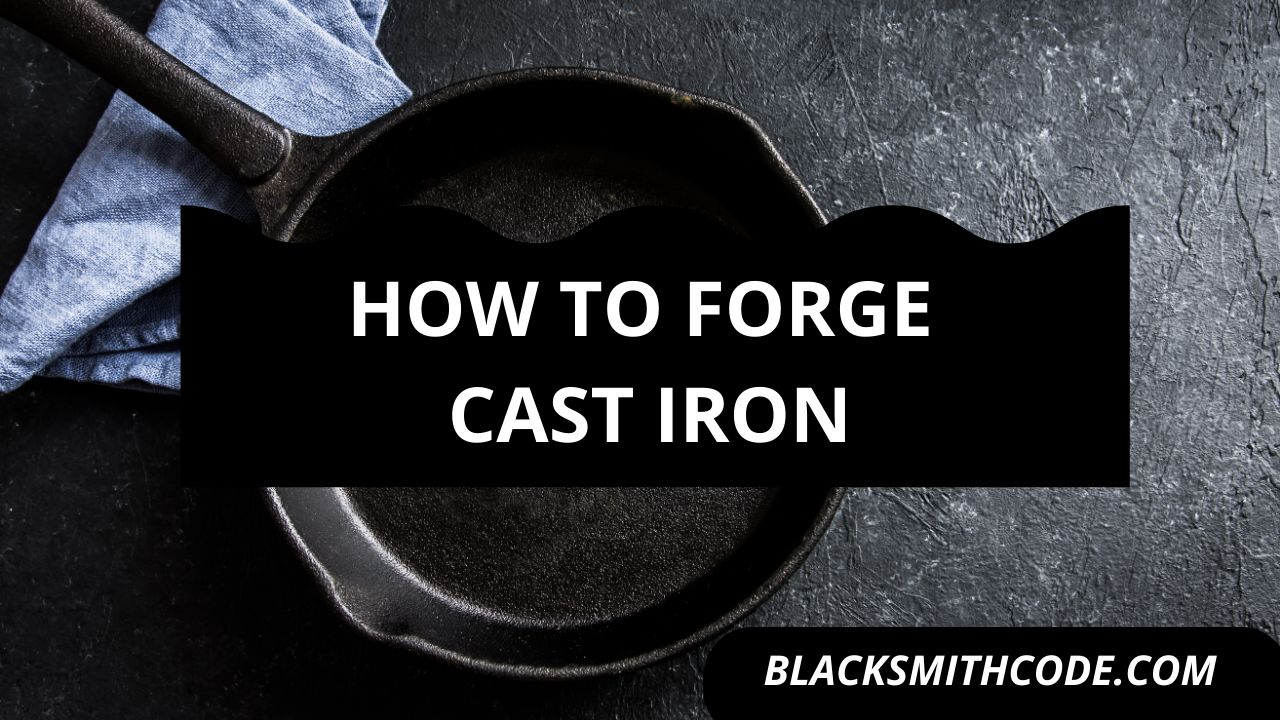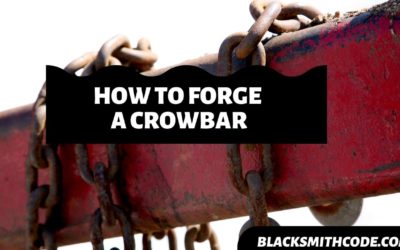Do you know that the brittle nature of cast iron does not limit what blacksmiths can make with it? One fundamental characteristic of every blacksmith is creativity. Their creativity allows them to create useful products from anything metallic. Read on to find out how to forge cast iron into various products.
Cast iron is a fantastic material for blacksmithing. Cast iron is from an alloy of carbon and iron. It usually contains about 2% carbon with iron being the dominant component.
The significant properties of cast iron include brittleness, high flexibility, low melting point, excellent mechanical strength, and high fluidity.
The first thing that comes to the mind of many individuals when they hear about cast iron is that it is brittle. This feature is why a lot of people think forging with cast iron is impossible. However, with blacksmiths, forging is always possible.
The only thing you need is the technical knowhow of blacksmithing and the necessary knowledge about the material. Here are the critical steps involved in the forging process of cast iron.
Instructions on How to Forge Cast Iron
Step 1: Organize Your Materials
First off, get your cast iron. Getting your cast iron should not be a significant problem. If you don’t have an existing one, you can purchase from blacksmithing retail stores.
The quantity of material you would need is dependent on the product you want to create.
Step 2: Heat Treatment
Yeah, you have it there. Don’t be surprised. This process is one of the ways forging cast iron differs from other materials.
It might be difficult or impossible to forge cast iron without heat treating it. The reason is simple. The idea is because cast iron is brittle as a result of its carbon constituent. Therefore, you must find a way to get rid of the carbon.
This process aims at getting rid of the carbon, increasing the strength of the iron and enhancing its malleability.
Quick Steps
- Heat the cast iron in the forge to a very high temperature.
- Remove from the forge once you realize it has reached the desired temperature.
- Allow it cool slowly in the presence of air. You can even put it in wood ash to make it cool more slowly.
- Please don’t make the mistake of quenching the material in water or quenching oil because it won’t help you to achieve your desired result.
- Repeat the process for as many times as you deem fit till you have your perfect effect.
Step 3: Cutting
At the end of step 2 above, your cast iron should already imitate a standard iron. Now, it is time to cut the iron and move on with the project. The cutting depends on what you are trying to forge and the form it will take.
You can either cut the iron while it is hot or cold. You can use a hacksaw or any other suitable cutter if you are cutting the iron while cold. A chisel can help you with the cutting of metal when it is hot.
Step 4: Drawing and Hammering
Now, start giving the iron the shape you want it to take. Hammer the iron while it is still hot. The malleability of iron increases with the rise in temperature.
Quick Steps
- Heat the metal to a workable temperature.
- Hammer to take the shape you want.
- Re-heat the iron in case it gets cold, and you haven’t gotten the form you want.
- The hammering technique and the hammer for this process are dependent on the project.
Step 5: Welding
Welding cast iron isn’t tricky. It is even more comfortable if you carry out your heat treatment properly. You can hammer down slightly to help you improve the quality of your weld.
Also, remember to clean up your welding slag once you are done.
Step 6: Grinding
Grinding is a standard process in blacksmithing. All you need for this step is the proper technical knowledge about how to handle your grinder correctly.
Grinding aims at helping you fine-tune all the edges of your project and give it a perfect shape. It can also help you create the template if you need to sharpen any edge if your material. Grinding is dependent on the project and the technicality of the individual in charge.
Step 7: Finishing
Finishing is to wrap up your work, give it an excellent outlook, and to increase its economic value. The conventional finishing for cast iron is polishing. Ensure that you use suitable polish for your project.
Other forms of finishing are a factor of the project and the individual in charge of the project.
FAQs on How to Forge Cast Iron
Question
What is the difference between iron and cast iron?
The significant difference between iron and cast iron is in their composition. Iron is a pure metal while cast iron is an alloy of iron and carbon. This composition serves as the basis for the differences in the properties of the two.
Cast iron is less malleable, more brittle, less ductile, and also has a lower melting point when compared to iron.
Question
What is the forging temperature of cast iron?
Every material has a suitable temperature that makes it easy to forge them. Cast iron is not an exception to this proposition. The forging temperature for cast iron is within the range of 800 to 1000℃.
Question
How long will it take to forge metal?
The duration of the process is dependent on the expertise of the individual in charge. On average, the forging duration of cast iron should be in the range of 4-7 hours. The variation is often due to technicality and the nature of the project.
Video
Precautions
The necessary precautions for forging cast iron include;
- Ensure the use of gloves and other protective coverings while working in the workshop.
- Consider the use of a respirator for this process.
- Ensure that your workplace is properly ventilated to allow the free flow of air
- Ensure that you are only using the tools and equipment that you can adequately handle.





